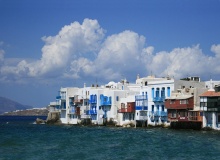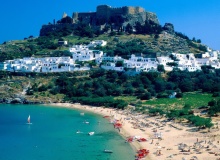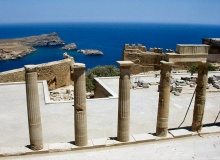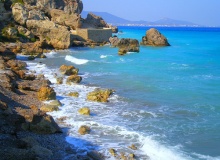Greece
Athens | Santorini | Mykonos | Rhodes
A destination with centuries of art and history to invigorate you mind
At the ancient site of Delphi, where the Greeks once consulted the Oracle about the future, there's a small round sculpture. It's known as the omphalos—the cosmic belly button. The Greeks believed that Delphi was the very centre of the world—the place where everything came into being. Indeed, many aspects of Western culture came into being in Greece—drama, art, philosophy and science.
It's a heady feeling to walk on stones that may have been trod upon by Plato, Homer or Agamemnon. But at many places in Greece, where ancient ruins are surrounded by the noise traffic, or where pristine island beaches are packed by topless sunbathers, it's apparent that the influence works the other way as well: Greece, it sometimes seems, has been overtaken by the modern world it spawned.
The trick for travellers in Greece is to find the golden mean—in this case, the balance between environment and history, between crowds and quiet, between ancient and modern. With a bit of planning (and maybe a query to the Oracle), you can find beautiful settings that can soothe your soul, and centuries of art and history to invigorate your mind. It's very likely you'll be as charmed by the Greek people as you are by their landscape.
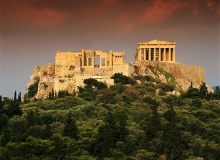
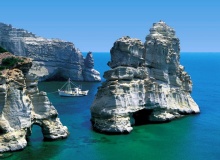

Athens
Sights in Athens have a special importance, more than in most other places in the world. They are firsthand histories of democracy, Western civilization and philosophy. You can't help but stroll around the Parthenon and the Acropolis and dream about those who have walked there before you.
The ancient and the modern merge in this city in ways that are fascinating and sometimes overwhelming. Pollution clings to the stones of the Acropolis and obscures views. Cars belch among ranks of concrete high-rises. But then you turn down a cobbled lane and discover vine-swathed tavernas and bazaars teeming with dusty treasures. Or perhaps you will encounter a sleek café, art gallery or an outdoor cinema that serves ouzo under the stars. Athens has been reinventing itself; the results could not be more charming.
The metro routes are extensive, and the stations dazzle with marble and antiquities. Congested downtown streets have been turned into pedestrian walkways, greatly reducing smog and noise. Hotels, museums and archaeological sites have been revamped. Gentrified districts such as Gazi and Psiri host cafés, clubs and chic restaurants which even boast smoke-free sections.
Greeks are proud of their renovated capital and Athens should remain prized for both its ancient charms and its modern makeover.
WHEN TO TRAVEL to Athens
After the Olympics in 2004, Athens has become a year-round city-break destination, but travel from March to November if you want guaranteed sunshine. Avoid the holiday period around the 15rth August when local tourism reaches its peak.
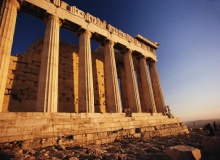
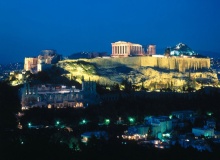
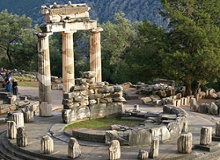
Santorini
It's best to approach this Cycladic island from the sea. The barren rocky cliffs rise straight out of the blue Aegean—their tops are dusted by what at first looks like a sprinkling of snow. Then, as you get closer, the snow takes the shape of Cycladic buildings hanging precariously off the hillsides. Zigzagging lines across the rock face become recognizable as roads that lead up from the sea to whitewashed houses perching on the cliffs.
Santorini owes its geological peculiarities to a massive volcanic explosion some 3,500 years ago that blew out the centre of the island. It's not surprising that the island's spectacular setting has made it one of the most visited islands in Greece.
Fira, the capital, is the largest of several towns perched on the rim and is known for its charming shops, bars and restaurants and wonderful sunset views. Fira’s small port can be reached via a funicular cable car, on a donkey or by climbing down some 600 steps.
The island is also renowned as a culinary trendsetter. Its typical local produce (pea-type fava, white eggplants and tiny tomatoes), is used by innovative chefs to create excellent fare. Gourmet restaurants here are among the country's best.
WHEN TO TRAVEL to Santorini
The summer heat in Greece can be very intense and so can the crowds. However, a lot of tourism in Greece shuts down in the winter and there are few travellers. This makes the spring (April, May) and autumn (September, October) the best time to visit the Greek islands.


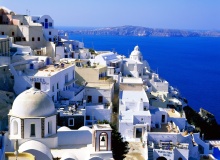
Mykonos
For Mykonos, one of the Cyclades Islands in the Aegean, the local culture is a mix of the sacred and the profane. This island is the gateway to the neighbouring unoccupied island of Delos, the sacred centre of the Cyclades. With almost a million visitors a year, this 80 square km island gets busy in summer.
Mykonos has more than 400 churches and chapels, as well as plenty of nude beaches and drag shows. Fashion models strut their stuff, and the nightlife can be as wild as anywhere in the world. Prices are high, too, but the food and shopping are better than almost anywhere else in Greece.
Mykonos Town is the centre of activity on the island. Stroll is narrow streets during the daytime if you want to experience a more traditional side of the city. On each side are smooth, whitewashed houses whose doors and windows are splashed with the bright colours of bougainvilleas, clematis and geraniums cascading from the wooden balconies. There are also several small museums that contain some interesting artifacts.
Outside the capital, the beaches are superb, provided you don't mind sharing them with a few thousand other people.
WHEN TO TRAVEL to Mykonos
For those who don't like crowds, spring and autumn are the best times to visit. The end of June until the end of July is just about perfect. The weather is warm, the crowds not too heavy, and accommodation is more easily secured prior to the prominent holiday on 15th August.
_________________________________________________________________________________
Rhodes
Only 30 km from the Turkish coast, this island is very popular with holidaymakers for its lively nightlife, excellent beaches, flowers, hills and historical sites.
Much of its flavour and architecture stems from the arrival of the Knights of St. John of Jerusalem, who occupied it 1310-1522. In the capital, Rodos, is the walled, medieval quarter of Old Town and the Agios Nikolas Tower, at the harbour entrance, which may stand where the Colossus of Rhodes once stood.
Other sights include the archaeological museum in the 15th-century Hospital of the Knights and the 14th-century Crusader's Fortress with its beautiful furniture, marble and fifth-century mosaics from the island of Kos. If you're there April-October, attend the sound-and-light show, concerts and folkloric performances. If time permits, visit the Acropolis of Rhodes to see a theatre, stadium and two temples.
About 50 km south of Rodos, near the town of Lindos, are the well-preserved, fifth-century-BC ruins of the Temple of Athena and remains of even older temples on top of the Lindos Acropolis. You can get a wonderful view of the village and the Mediterranean from this point. What makes Lindos pleasant is that cars are banned from the streets and a stop in Lindos, a national historic landmark, is highly recommended.
WHEN TO TRAVEL to Rhodes
With an average of over three hundred days of sunshine a year, it has a long season lasting from March to November. Rhodes offers guaranteed sunshine, beautiful beaches, clear water, quaint old towns and ancient monuments.

